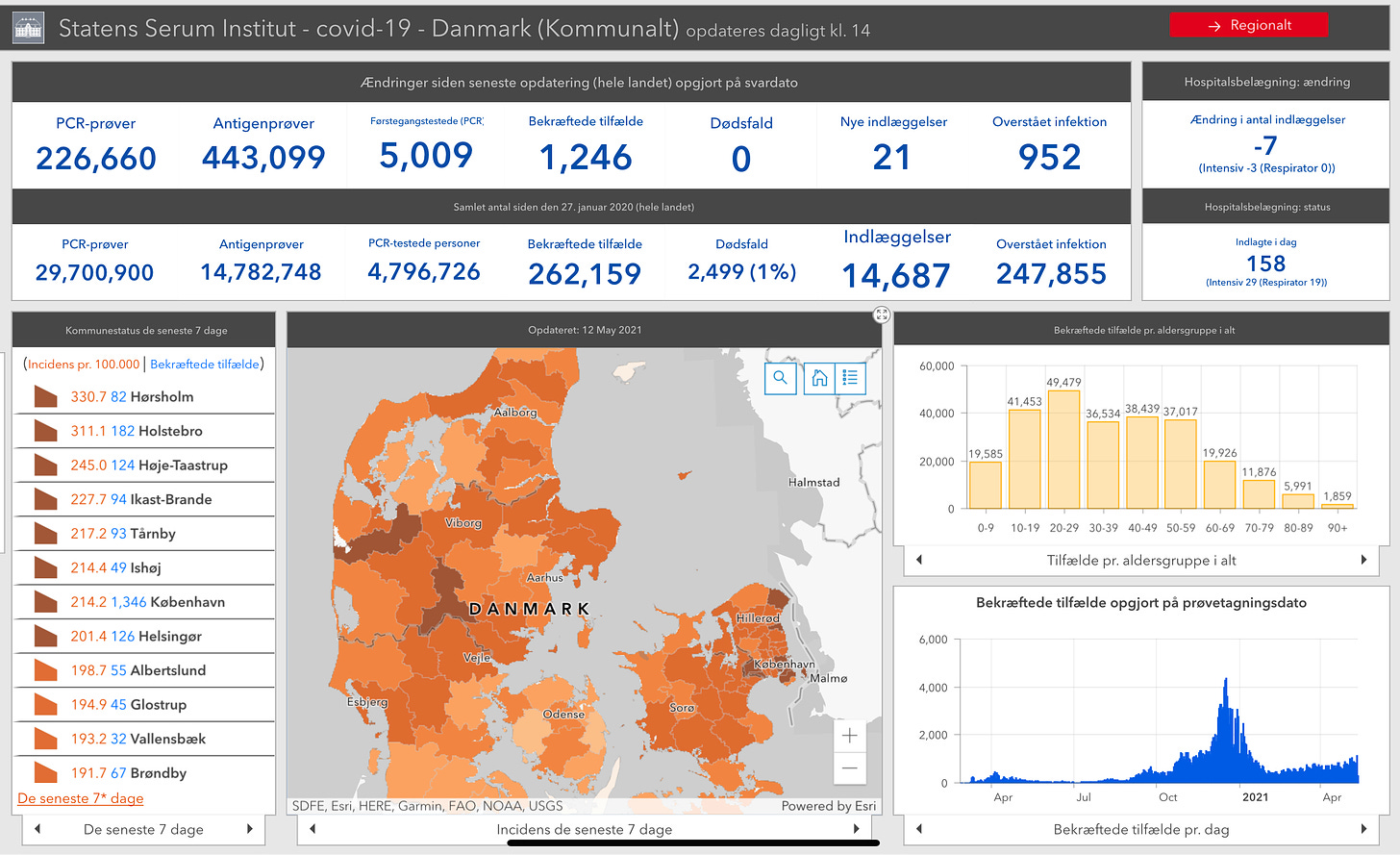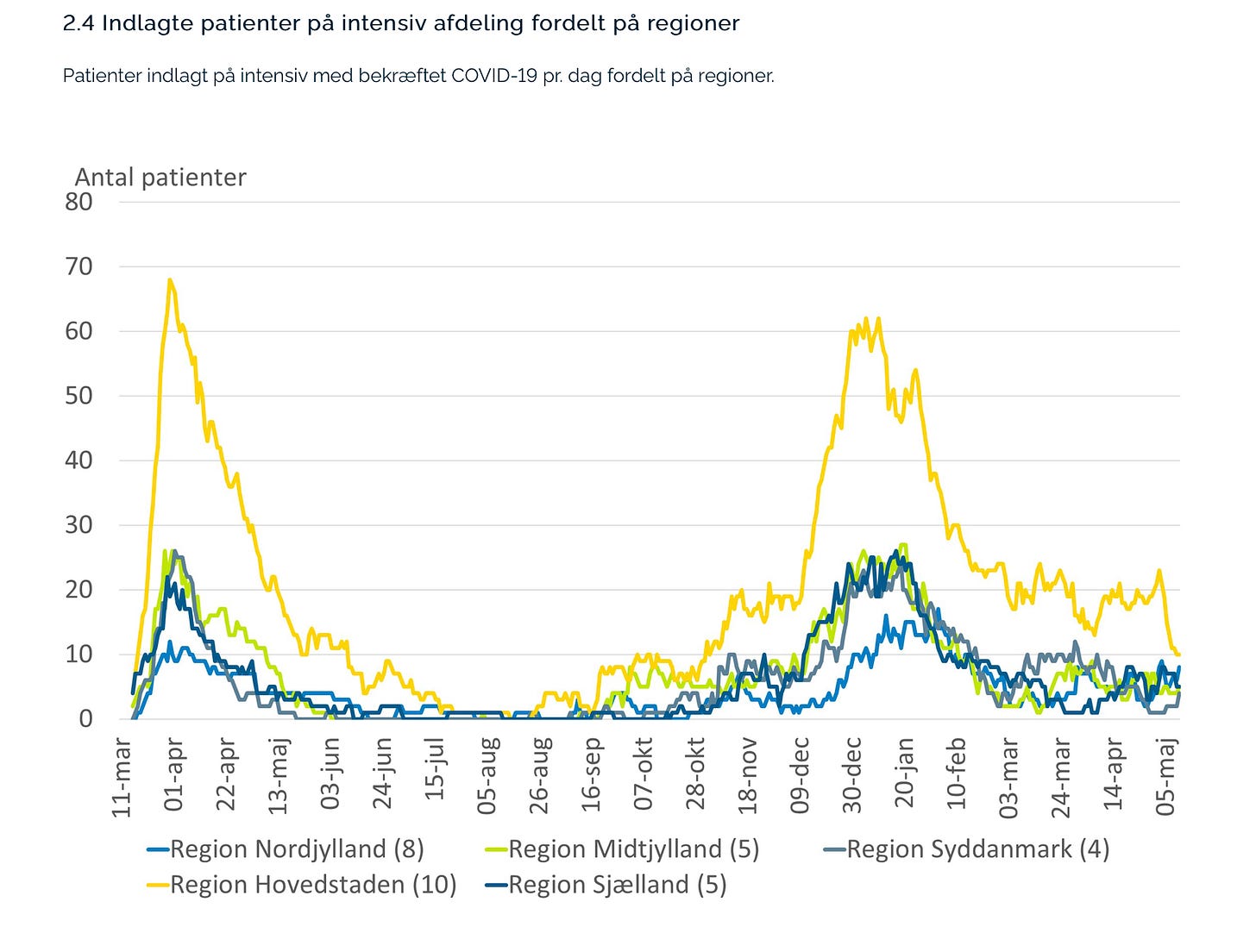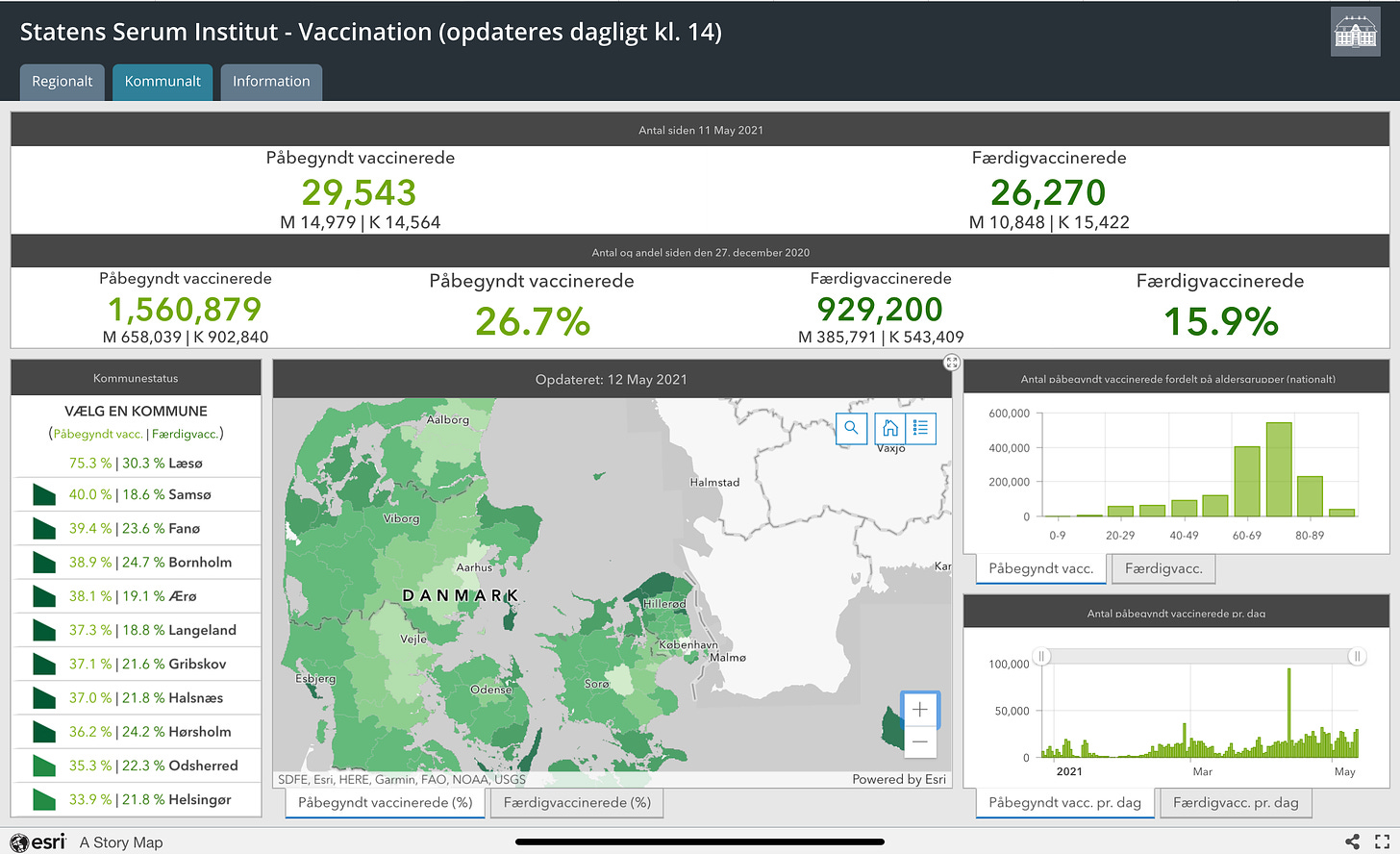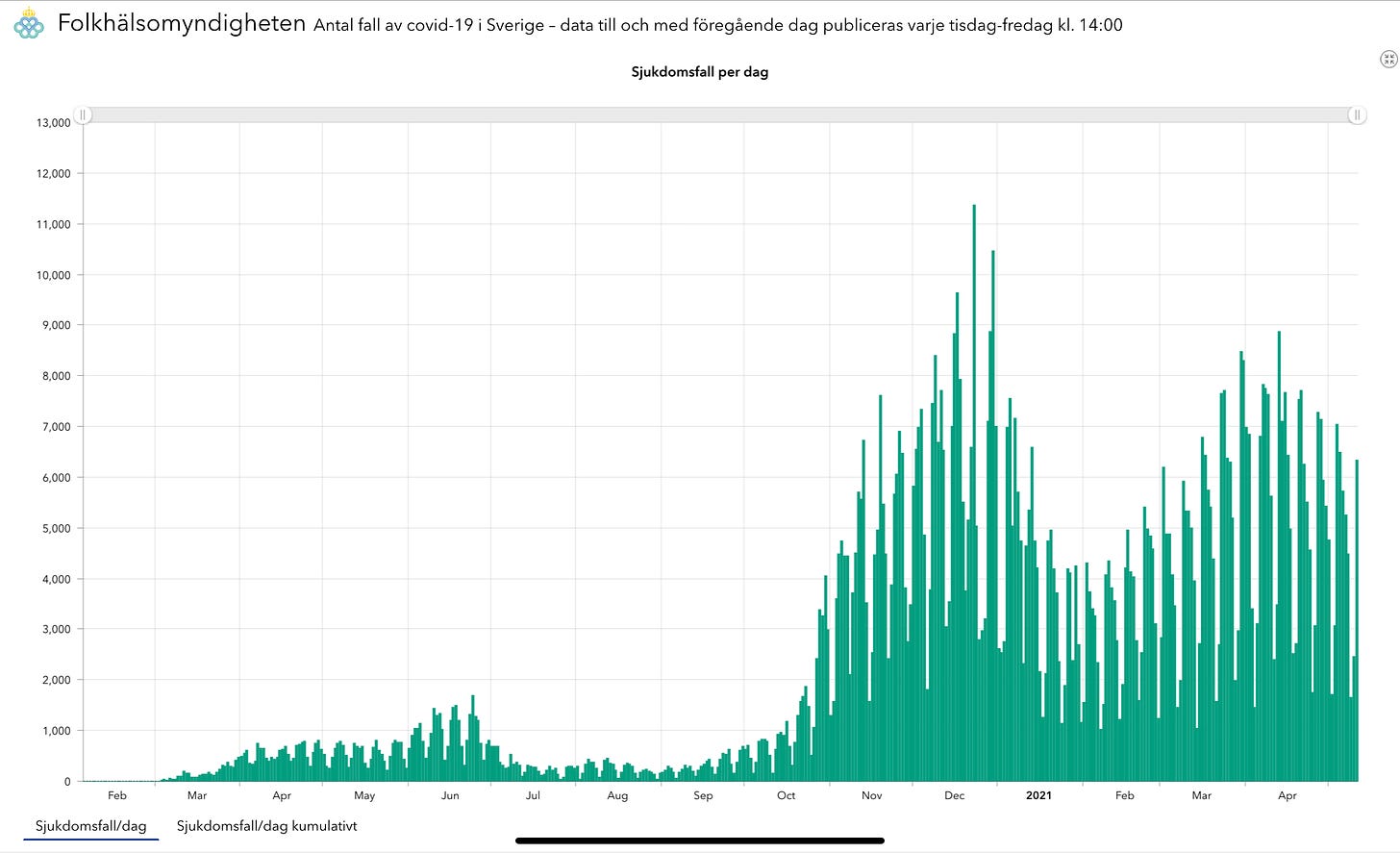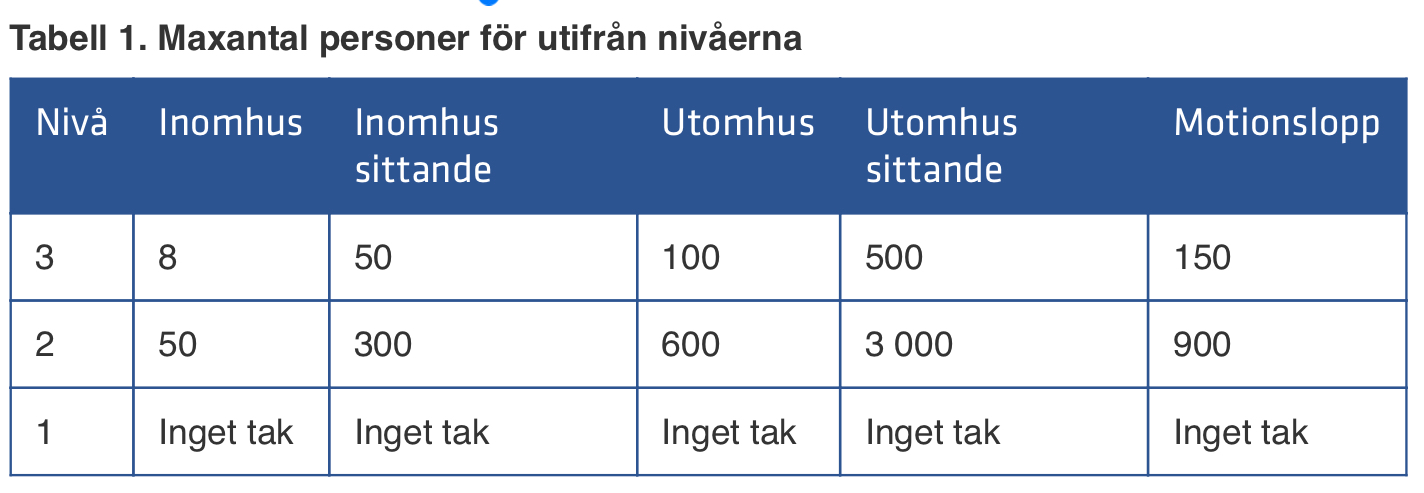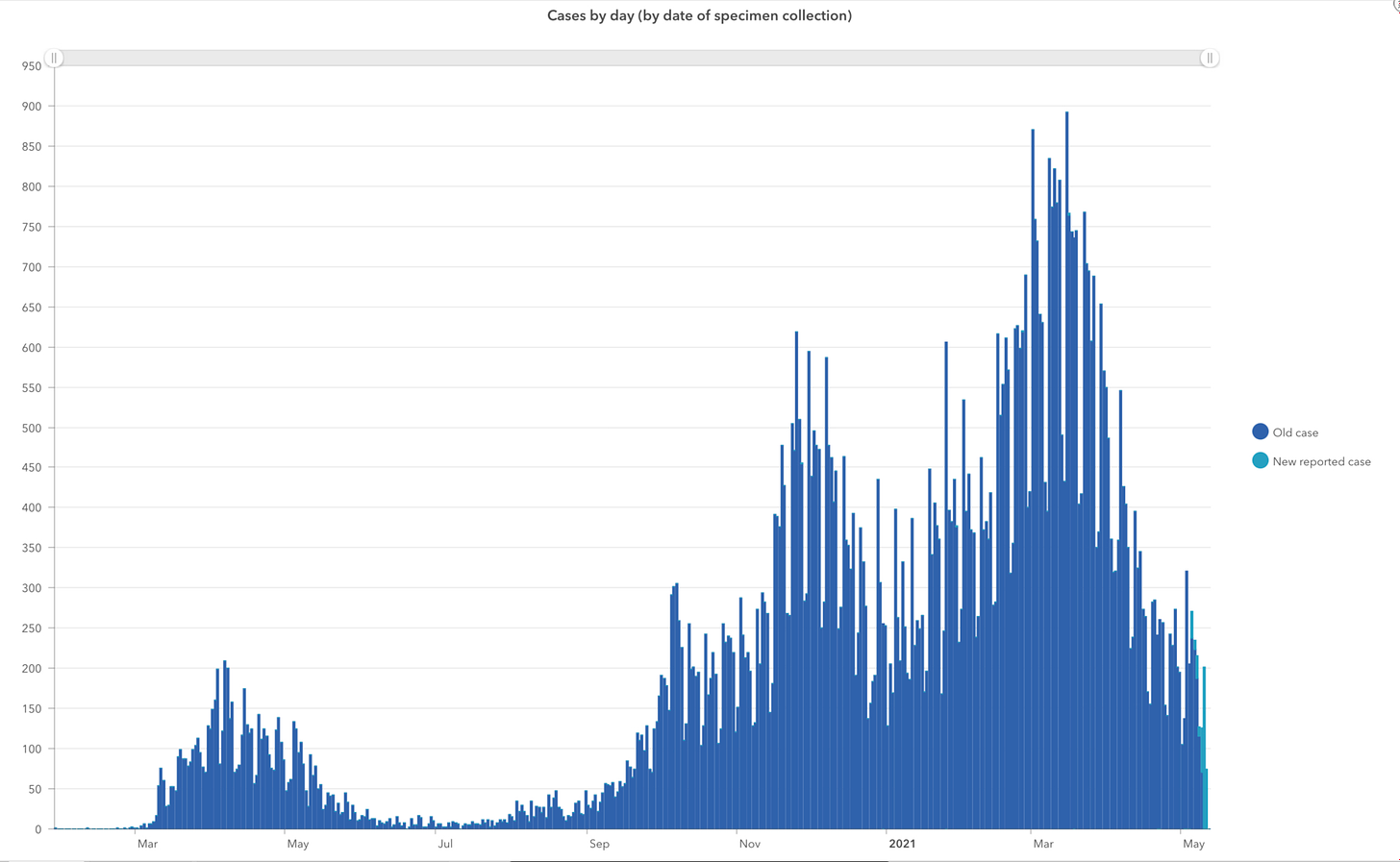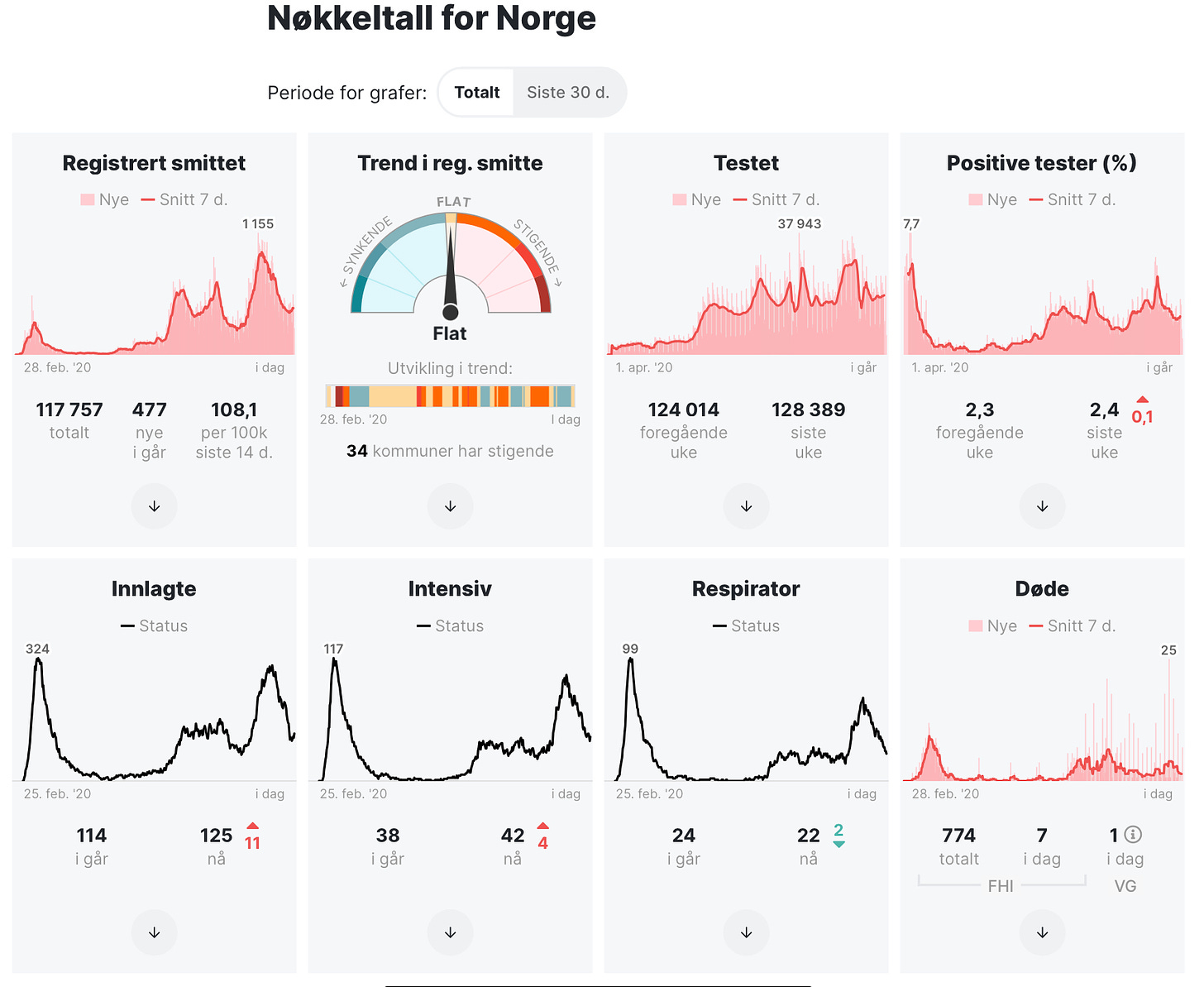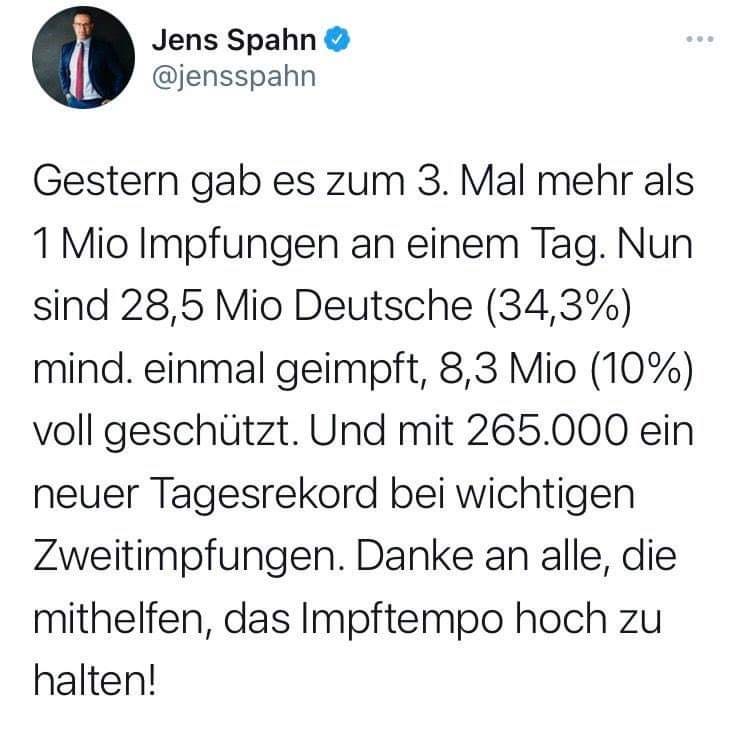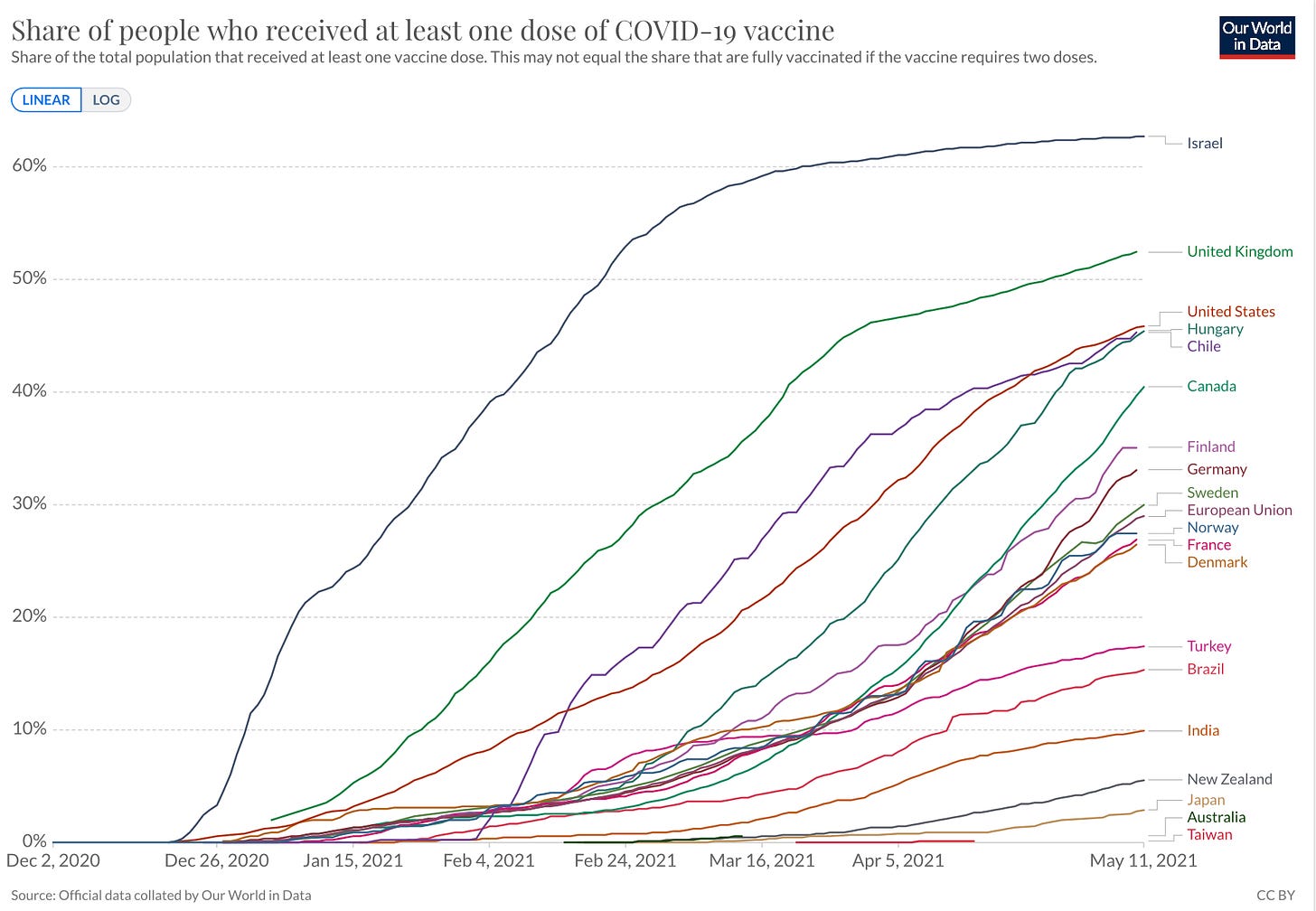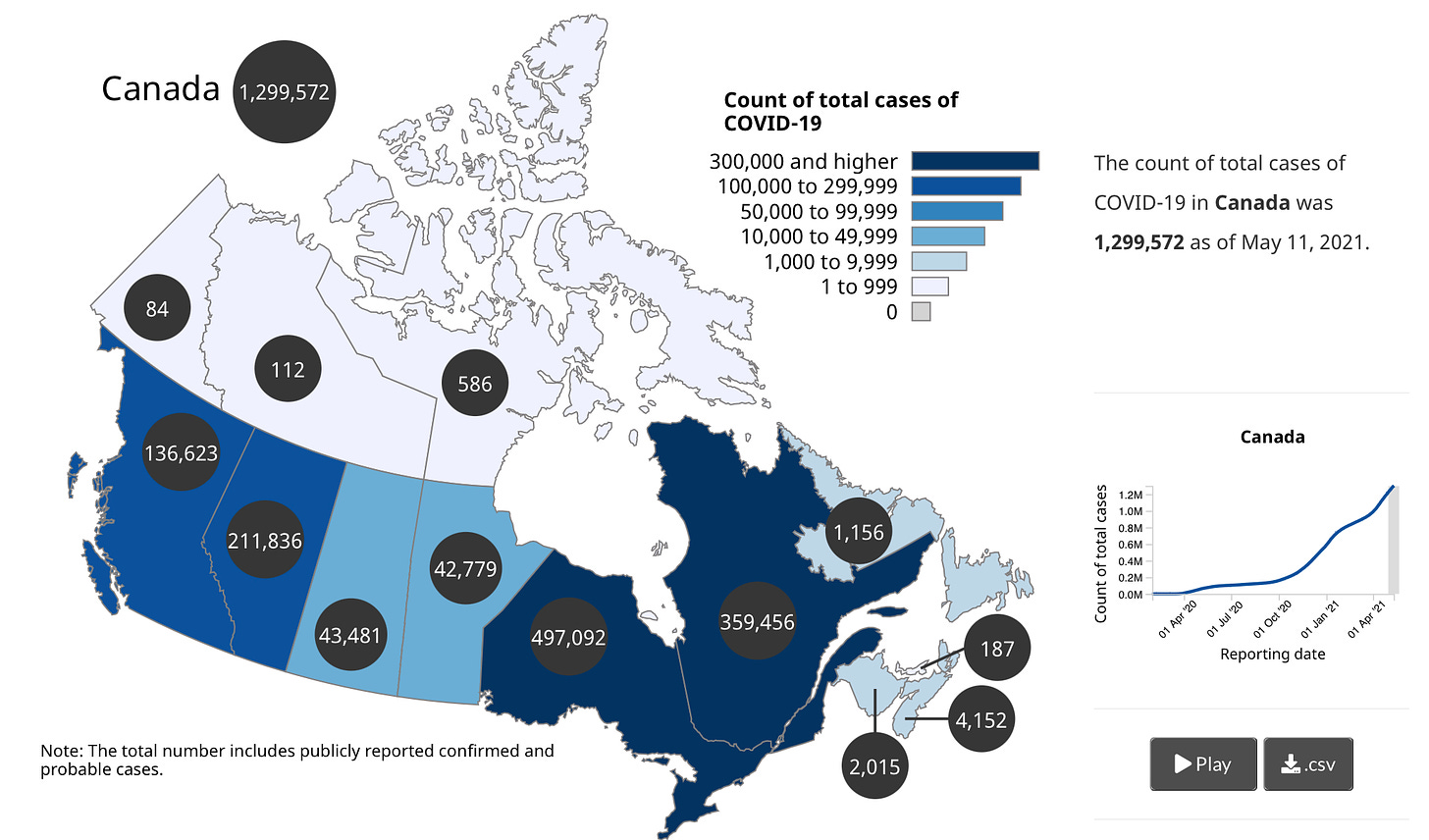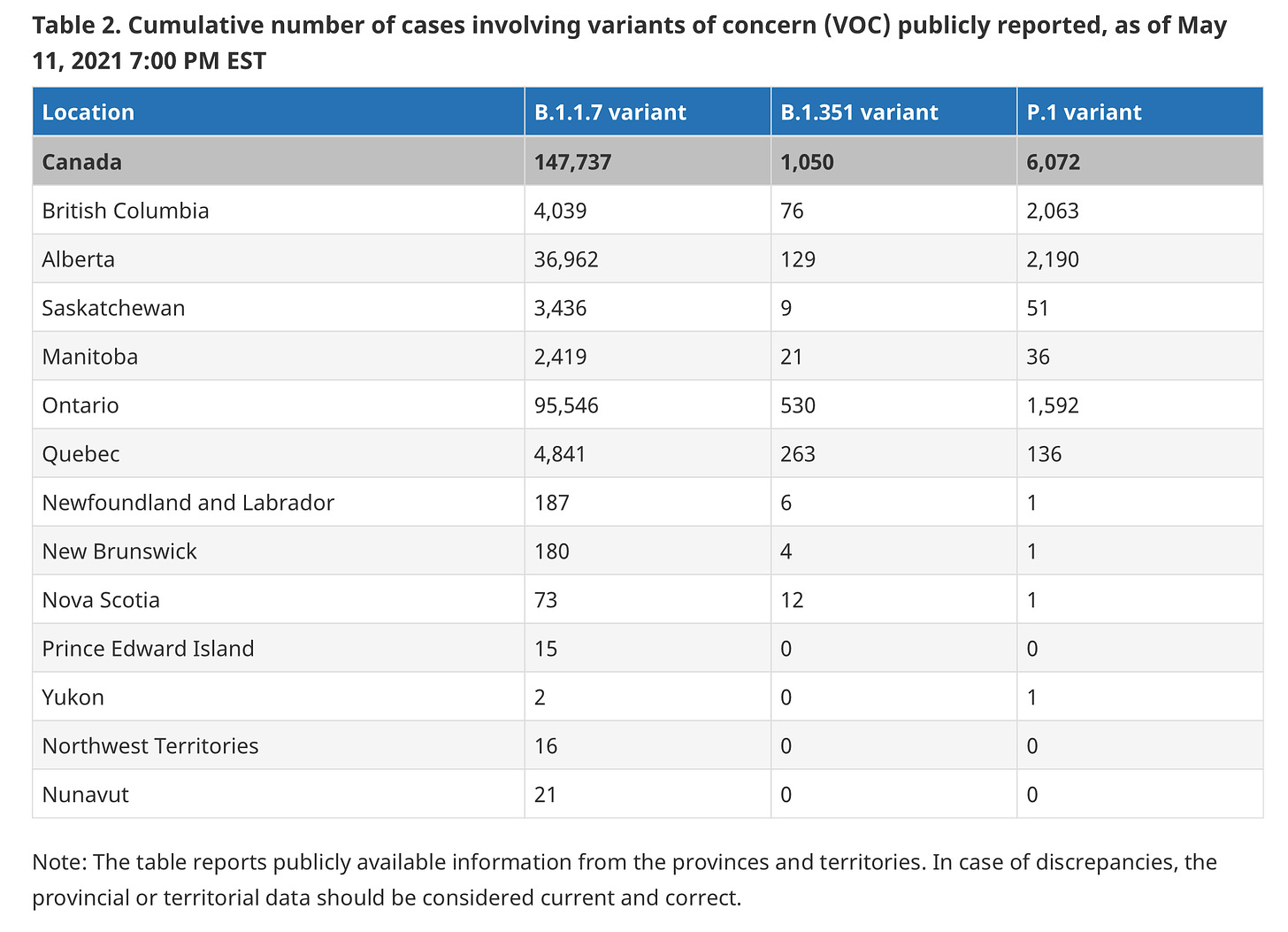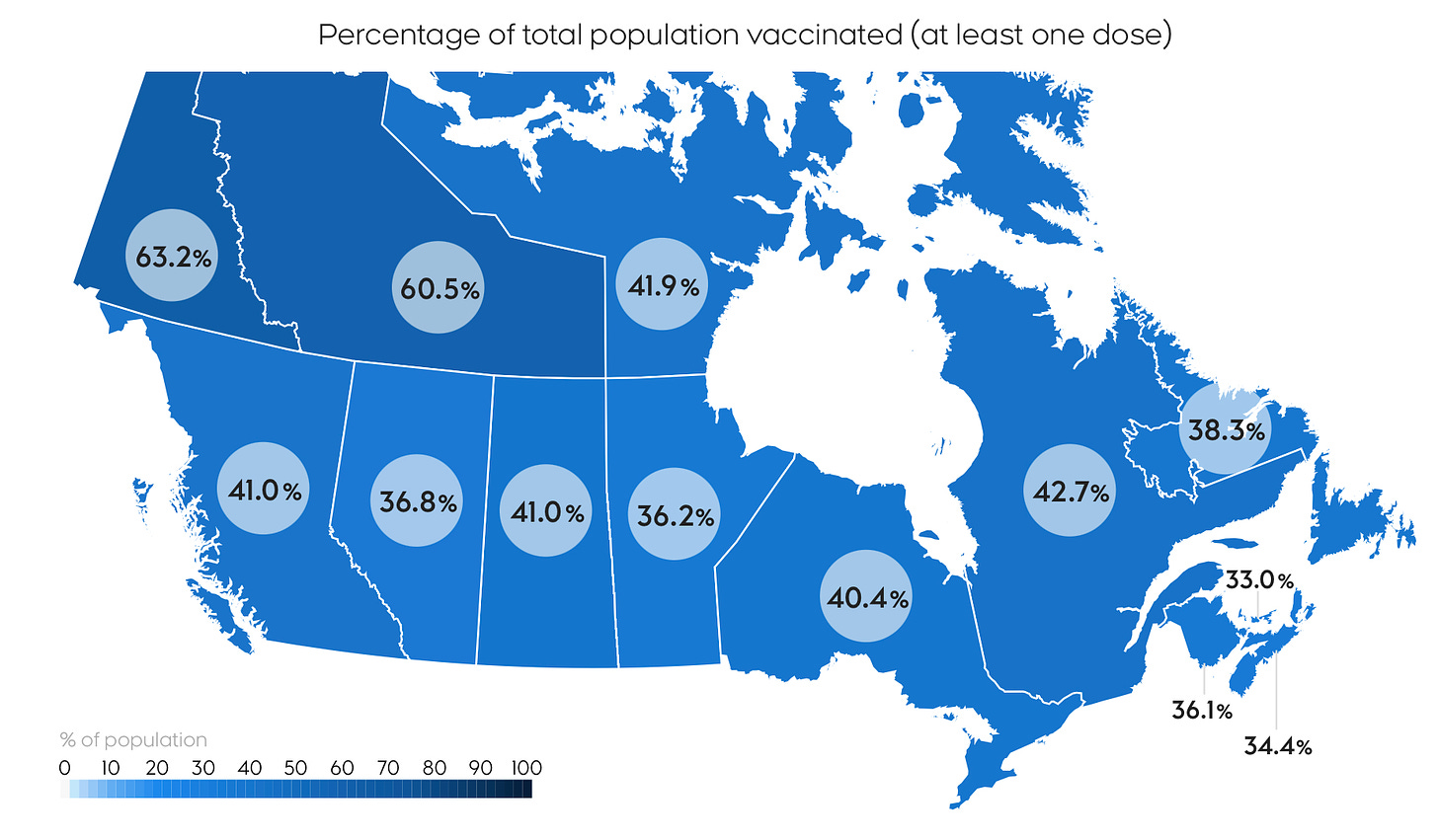🇩🇰
It seems the COVID lockdown in Denmark created some opportunity for people to get busy getting busy. Berlingske did a dive into numbers from Statistics Denmark and found there has been a pandemic baby boom across the country. Nationally birth rates were up 3.4% in the first quarter of 2021.
It reports that statistics show babies were arriving in higher than usual numbers across many Danish municipalities in the first quarter of the year. Some of the largest percentage increases in the number of newborns are found in the municipalities of Tårnby, Furesø and Bornholm, where the increase is 45%, 48%, and 50%, respectively.
-
The Danish National Board of Health says vaccination invitations have now gone out to those 55 to 59 years old to begin getting their first inoculations. Last week people aged 60 to 64 years began the vaccination process.
Director Søren Brostrøm lauds the effort and notes he will be among those invited to get their first shot.
“We are very pleased that most of the target groups 1-9 have now received an invitation to be vaccinated, and that a very high proportion of them have also booked time for vaccination or have been vaccinated. Now the time has come for the 55-59-year-olds, who are my age group, and I look forward to it being my turn to be vaccinated.”
The agency says vaccination uptake is very high for those 70 years old and older - 92% have had at least one dose. Even so, the health board is sending out reminder letters to those who haven’t responded to the vaccination invitation.
“The reminder letters are having the desired effect and that is really positive; namely that more people remember to book time for vaccination. We see a clear tendency for the most recently initiated target groups to already be approaching a level of uptake of 90%, which is very satisfying.”
In addition to the reminder letters, the health board is also going to set up pop up vaccination sites in areas where there is the highest proportion of people who haven’t responded to vaccination invitations.
“We are making an extra effort together with a number of municipalities and regions to bring the vaccination sites out to the places where distance barriers, socio-economic conditions, infrastructure, language barriers or other things can be decisive for not being booked for vaccination. The goal is to reach everyone.”
-
The Danish Agency for Patient Safety says COVID restrictions prohibiting visitors at hospitals in Hvidovre and Herlev will be allowed to expire tomorrow. Relatives and friends will once again be allowed to visit their loved ones who are in hospital.
-
Denmark is reporting 1,245 COVID infections, the highest since January 12th, with no new coronavirus deaths in the last day.
Yesterday there were 669,759 total corona tests done, 226,660 PCR and 443,099 rapid, for a (PCR only) positivity percentage of 0.55%.
-
On the variant front, the number of infections of the further evolved U.K. variant with the E484K mutation has increased from 72 to 86.
The Staten Serum Institut has now divided the India variant into two sub-types B.1.617 and B.1.617.2 of which there are 29 and 40 confirmed infections respectively. That is a slight increase overall.
-
COVID hospitalizations (158) have dropped (-7), while the number of those in an ICU (29) also declined slightly (-3). The number on a ventilator (19) remains unchanged.
Metro Copenhagen still has the most hospitalizations of the five health regions including for those in an ICU.
-
On the vaccination campaign to date, 1,560,879 1st dose vaccinations (26.7% of the population) have been administered while 929,200 people (15.9%) are now fully vaccinated.
Yesterday there were 55,813 total vaccinations done. Daily vaccinations have increased from around 30,000 a day on average up to 50,000. However, we still aren’t seeing anything even close to the numbers of 100,000 to 400,000 daily vaccinations promised by the Danish government.
-
The Danish Medicines Agency has released the findings of the first of four planned population level surveys to gauge public awareness about COVID vaccines. It found people in Denmark, while generally knowledgeable about vaccines, underestimated how frequently vaccinations result in mild side effects like feeling tired, getting a fever, or having a sore arm. It also found about four in ten people in Denmark will seek help from their doctor for things like a fever immediately following a vaccination.
Another interesting finding is that more than half of those aged 16 to 34 years old feel the vaccine debate is plagued with misinformation and the discussion, especially online, is extremely toxic.
As an aside, the Danish Medicines Agency is launching a social media campaign called #ThinkForDuDeler (Think before you share) to encourage people to be critical about sources of information and to treat each other better.
🇸🇪
Sweden has added 6,330 infections and another 50 corona deaths since yesterday’s update.
To date, 3,060,144 1st dose vaccinations (37.4% of the population) and 897,321 2nd dose (11%) have been done.
-
Almost half of Sweden’s regions have moved into phase four vaccinations as they work to get those between the ages of 55 and 59 their first shot. The different regions have varying degrees of vaccination progress. Phase four vaccinations cover everyone over the age of 18 but groups are called in by age in five year increments beginning with the oldest first.
-
The Swedish Public Health Agency is forecasting a “return to normal” by September if vaccinations remain on track, people comply with the rules, new variants don’t emerge, and the infection situation doesn’t explode again. It says a gradual lifting of restrictions could begin on June 1st.
Agency's Director General Johan Carlson:
“The future development of the pandemic in Sweden is dependent on the vaccination work continuing as planned and that we reach a high level of vaccination coverage in the population.”
Restrictions will be relaxed in three phases. However, the agency notes the coronavirus won’t disappear entirely and a flexible testing and infection tracking system needs to remain in place.
Phase one on June 1st:
Limits on the number of people allowed to gather in public and at events would be increased. The agency reserves the right to mandate infection control measures and any attendance limits depending on venue size and design.
Sports would also begin to open with smaller competitions indoor or outside for children and young people. Some limited competitive sports for adults “on a smaller scale” may also be allowed.
Amusement parks would also be allowed to reopen with infection control measures in place.
Small scale camping activities especially for children and young people can resume.
🇫🇮
Finland registered 280 infections and three more virus deaths since yesterday’s update.
COVID hospitalizations (114) are unchanged while ICU numbers (24) are down (-2).
Finland has crossed a vaccination milestone with over two-million first doses given. To date, 2,014,653 1st dose (36.2% of the population) and 238,730 2nd vaccine doses (4.3%) have been administered.
-
Finland’s Public Health Institute has confirmed the India corona variant in 25 infections to date. The World Health Organization has now added the variant to its ‘variants of concern’ list due to it being more infectious than the original virus strain.
🇳🇴
Norway has added 518 infections and seven more corona deaths since yesterday’s update.
COVID hospitalizations (125) are up (+11). ICU numbers (42) also rose (+4). Ventilator numbers (22) are down (-2).
To date, 27.93% of Norwegians have had one vaccine dose and 9.55% have had both.
-
Norway has removed the AstraZeneca vaccine permanently saying the risk of rare but potentially fatal side effects outweigh any benefit. As in Denmark, health authorities also cited the current pandemic situation as being stable enough that the AstraZeneca vaccine is not needed.
Norwegian Minister of Health Bent Høie:
“The government has decided that the AstraZeneca vaccine will not be used in Norway. The rare but serious side effects we have seen in Norway indicate that the risk outweighs the benefits. This is especially true when we expect significantly more mRNA vaccines in the future, and the time interval between the first and second vaccine dose has been extended so that more people are vaccinated more quickly.”
The Norwegian government will now have to decide what to do with their AstraZeneca doses. Two options already on the table are to donate them to other E.U. countries or to give them to the international COVAX vaccination collaboration.
“We will do this in collaboration with the European Commission and with the E.U. countries included in the agreement with AstraZeneca. It is an effective vaccine that has been used in many countries, and we will therefore ensure that Norway's doses are useful in other countries, which may have a more serious infection situation than we have in Norway.”
Norway has already donated AstraZeneca doses to both Iceland and Sweden.
The Norwegian government also announced today it will keep the Johnson & Johnson vaccine on pause. However, unlike AstraZeneca, Norway will hold on to a large number of doses. Norway has ordered 3.77 million doses of the Johnson & Johnson vaccine, of which it already has 72,000 doses. It has decided to use the vaccine as an emergency stockpile should the outbreak situation worsen or if supplies of Moderna or Pfizer are seriously impaired. It will now determine how many doses should be held in emergency reserve. Anything over that will be donated elsewhere.
🇪🇺
The European Medicines Agency said today that it is “monitoring very closely” the situation across Europe and all of the data to do with infections involving the India variant. It said that, while not 100% confirmed, it is “seeing some promising evidence” that existing mRNA vaccines will work against it.
It also added it has “very limited data” when it comes to vaccinating pregnant women. They are examining available data as well as information from other jurisdictions to make an informed decision. The U.S. and U.K. are among the few countries that have recommended vaccination for pregnant and breastfeeding women.
🇩🇪
Germany’s Health Minister Jens Spahn says for the third day in a row more than one-million vaccinations were administered. As well, a record high 265,000 of those inoculations were 2nd doses. He says 28.5 million people (34.3% of the population) in Germany have had one vaccine dose while 8.3 million people (10%) are fully vaccinated.
🇦🇹🇩🇪
Austria is beginning to gradually lift border restrictions with the German border state of Bavaria. Austrian Chancellor Sebastian Kurtz made the announcement saying that border region “is interwoven like hardly any other region in Europe.” Kurtz says the border will be opened to “small-scale border traffic as early as tomorrow” in a step toward returning to normal. If all goes well remaining restrictions will be eased and usual border traffic between Austria and Germany will return.
🌎💉
Here is the Wednesday global vaccination update via Our World in Data of how a number of countries stack up in the global vaccination effort. It is worth noting that Denmark has steadily dropped for 1st doses administered. However, it remains among the top several countries in the E.U. for 2nd dose inoculations.
🇨🇦
A number of provinces, including Ontario and Alberta, are no longer offering AstraZeneca vaccination doses due to the risk of rare but potentially fatal side effects (Ontario) or because of supply shortfalls (Alberta).
Yesterday Canada reported 5,373 infections and another 32 coronavirus deaths.
Both Alberta and Ontario are amassing high numbers of variants both P1 and B117.
To date, 15,281,259 1st doses (40.21% of the population) and 15,281,259 2nd vaccine dose have been administered.
Today Ontario’s Health Minister Christine Elliott tweeted, “Ontario is reporting 2,320 cases of COVID19 and nearly 45,700 tests completed. Locally, there are 712 new cases in Toronto, 452 in Peel, 157 in York Region and 139 in Durham and 113 in Hamilton. As of 8:00 p.m. yesterday, 6,491,666 doses of the COVID-19 vaccine have been administered, and over 50% of Ontarian adults have received at least one dose of a vaccine.” The province also suffered another 32 virus deaths.
Quebec reported 745 infections and 11 corona deaths.
In Atlantic Canada, Nova Scotia recorded 149 infections today. Newfoundland and Labrador reported ten. New Brunswick has nine.
Manitoba had 329 infections and no new corona deaths yesterday. Its seven day rolling average for daily infections has hit 427, which is the highest ever in the pandemic.
There were 186 infections and four more virus deaths in Saskatchewan yesterday.
Alberta had 1,449 new infections and three more virus deaths yesterday. There are 705 people in hospital, with 163 in an ICU. The province has a positivity percentage of 12%.
B.C. reported 515 infections and two more corona deaths yesterday. There are 426 people in hospital, with 141 in an ICU.




